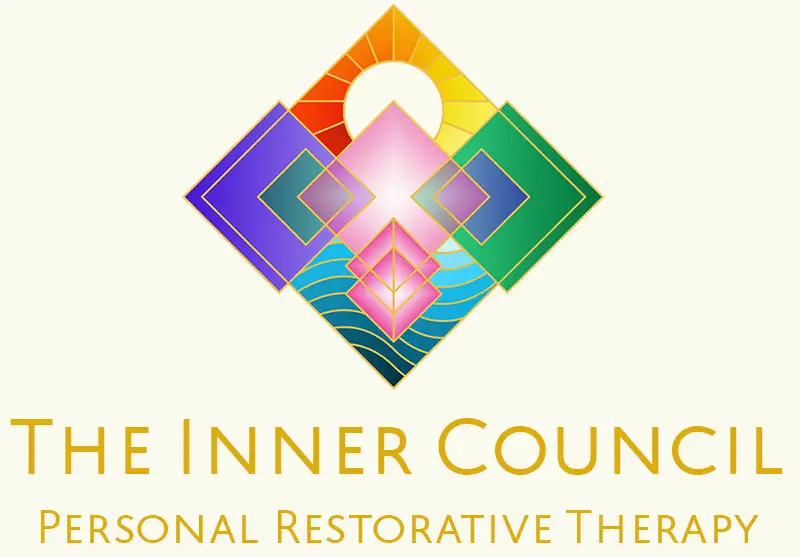BOOK YOUR WORKSHOP TODAY
All posts published here are presented as casual conversation pieces to provoke thought in some direction or another, they do not necessarily represent fixed opinions of the Inner Council, as our work exists beyond the spectrum of bound statement and singular clause.
Discover how releasing survival-speed, meeting the inner child, and restoring rhythm transforms life from forced acceleration to soulful navigation.
Key Takeaways
- Trauma accelerates us into “speedboat mode,” where urgency replaces authentic pace.
- Emotional release shifts the body from vibration to rhythm, transforming propulsion into presence.
- The speedboat becomes a sailboat when the nervous system no longer carries childhood overwhelm.
- Healing alters our inner vibration, changing the relationships, patterns, and possibilities we attract.
- Rhythm returns when the inner child is met—allowing the body to exhale and guide from intuition.
- The soul corrects course when the engine quiets, inviting a life led by wind, not fear.
The Speedboat: Trauma’s Accelerated Pace
In Inner Child work, certain imaginal symbols appear with such exactness that they reveal truths no theory could name. One of the most striking is the motor or engine. It appears always as a totem of traumatic, revved-up energy. There is something visceral about the way trauma shapes pace, and the engine’s charge seems to be the inner child’s way of directing our attention to it.
A speedboat tears across open water — engine roaring, spray rising, the horizon blurring into a single line of forward motion. It looks powerful. At times, it even feels admirable. But the imaginal world reveals what the nervous system already knows:
Trauma accelerates us.
A child who grows in chaos, unpredictability, emotional sharpness, or ancestral pressure learns to move quickly — not because life is calling them forward, but because something unresolved behind them refuses to slow.
They begin outrunning:
- discomfort
- shame
- rejection
- heaviness
- loneliness
- the unspoken moods of adults
The pace becomes a personality.
The urgency becomes an identity.
The speedboat becomes the self.
Engines do not simply propel, they vibrate. A body held in survival hums like machinery forced beyond its intended rhythm. In Dune, desert hunters summon the sandworms with rhythmic thumpers. It is not magic, but resonance. Vibration summons whatever echoes its frequency.
Trauma works the same way.
A nervous system still running at the speed of childhood survival emits its own signal: a low, urgent hum. That hum draws toward it experiences that match its pitch:
- familiar conflicts
- heavy emotional states
- recurring ancestral patterns
- relational dynamics that echo childhood
Not because a person is doomed,
but because vibration calls its own kind.
The Cost of Speed
Speed always has a price, but a child does not get to choose whether they pay it. They learn to move fast because slowing down would expose them to what no one helped them hold.
And the cost accumulates quietly:
- a body that never fully rests
- an adulthood lived in forward-leaning anticipation
- difficulty receiving, pausing, or being met
- relationships shaped around urgency instead of intimacy
- decisions made from momentum rather than clarity
- a nervous system that reacts faster than life requires
Trauma hardens into pace, and pace hardens into identity. What began as a survival response becomes the atmosphere through which a person moves in adulthood.
The outward image may appear competent, driven and animated. Yet inside, the engine continues to run at childhood frequencies. This is why rest often feels intolerable or why stillness feels unsafe. Why the body resists slowing, even when the mind understands the need.
Speed becomes a kind of armour. Acceleration becomes a kind of shield.
The hum of urgency becomes a familiar home.
This is the hidden cost: the nervous system never returns to its natural weight.
The child who learned to move at the pace of danger grows into an adult who struggles to find the pace of belonging. Their body remembers the speed long after the threat is gone.
But speed is not destiny. It is only the residue of what happened, and the psyche shows it to us so clearly, because it longs for something else.
Throwing the Weight Overboard: How Release Changes Reality
Many traditional healing systems teach that imbalance begins before symptoms. When a meridian pulses too sharply or too faintly, the entire system reorganises around the distortion.
Trauma creates this same distortion in the psyche.
During integration, something extraordinary often unfolds: when the emotional weight of childhood begins to soften, the body’s pace changes. The heart quiets. The engine hum falters. And the imaginal world reveals this through the metaphor of speed.
In one session, a client raced across open water with his inner child. The child carried a sealed box, the distilled residue of his earliest overwhelm. When he finally threw that box into the sea, everything changed.
The engine stopped growling.
The vibration eased.
The speed dissolved.
And the speedboat became a sailboat.
This shift is not symbolic.
It is physiological.
When trauma softens, the nervous system re-enters the state where:
- intuition becomes audible
- presence becomes possible
- relational safety becomes real
- decisions come from the body rather than fear
- life stops feeling like something to outrun
A sailboat moves with wind rather than fuel.
It listens.
It responds.
It engages with the world rather than escaping it.
Healing begins at this moment: when propulsion gives way to rhythm.
The Sailboat: Life After Survival Mode
A sailboat is not slow because it is weak, but because it is responding appropriately and listening.
When the speedboat becomes a sailboat, nothing external changes but the orientation toward life shifts entirely. With no engine forcing movement, the person begins to collaborate with forces that once felt overwhelming.
This is the paradox of recovery: Slowness is not collapse. Slowness is mastery.
A regulated nervous system does not need to rush. It no longer fears stillness.
A sailboat teaches what the child never learned:
Movement can come from desire, not pressure.
Direction can come from intuition, not urgency.
Pace can follow the heart, not threat.
Stillness can be safe, not dangerous.
As the engine quiets, the psyche wakes. Subtle sensations, once drowned out by survival, return as navigational instruments:
- empathy
- discernment
- longing
- sensitivity
- joy
These are not luxuries. They are sails.
Trauma is too loud for sails to catch wind.
But once the engine stops, the world becomes textured again.
And for the first time, a person realises:
I do not need to outrun my past.
I can let my life carry me.
Pattern, Field, and the Vibrations We Call Toward Us
When the speedboat becomes the sailboat, the vibration changes, and with it, the entire field around us shifts.
Trauma entrains repetition.
Healing entrains possibility.
While the engine was running, its hum pulled familiar heaviness toward us — not through fate or punishment, but through frequency.
Just as thumpers summon the worms,
just as disrupted meridians summon stagnation,
a traumatised rhythm summons experiences that match its pitch.
But when the vibration changes, so does the world.
A person living in a sailboat-state begins to notice:
- gentler relationships
- clearer intuition
- fewer conflicts
- more fitting opportunities
- faster emotional recovery
- a sense of belonging once unreachable
These are not accidents. They are resonance.
Trauma broadcasts one signal: “I am not safe.”
Healing broadcasts another: “I am ready to be met.”
This is why Inner Child work cannot be reduced to cognitive insight.
Insight does not change the vibration.
Insight does not alter the field.
Insight does not silence the engine.
Healing begins when the inner child releases the energy:
when their fear is heard,
their loneliness held,
their weight no longer carried alone.
Only then does life begin returning different things.
The desert stops shaking.
The worms quieten.
The meridians soften.
The wind returns.
And the soul remembers its original pace.
The Return of Rhythm: Re-Entraining the Nervous System
When the speedboat becomes the sailboat, it is not because the sea has changed. It is because we have.
Trauma disrupts the natural rhythm of the body, replacing breath with bracing, curiosity with vigilance, spontaneity with prediction. A child’s nervous system was designed to move in rhythm with life:
- play
- rest
- wonder
- emotional waves
- connection
When raised in unpredictability, this rhythm collapses.
Their body pulses at a frequency that is not their own.
Healing is the reclamation of the original cadence.
It reveals itself in tiny, easily-missed moments:
- an exhale that happens on its own
- a decision that arises without fear
- a boundary spoken without collapse
- a tenderness felt without threat
- the inner child stepping out from behind the engine room
This is rhythm.
Not a routine.
Not a technique.
But the body’s original music resurfacing.
And when rhythm returns, the world harmonises with it.
The wind becomes something you can trust.
Healing is not a becoming, it is a returning.
The Soul’s Course Correction: From Outrunning Life to Being Carried by It
The greatest shift in healing is not the slowing down.
It is the change in direction.
Trauma makes us live away from.
Healing invites us to live toward.
For years, sometimes decades, the engine has been steering the boat:
toward safety instead of fulfilment
toward protection instead of intimacy
toward coping instead of expression
toward familiar pain instead of possibility
But when the engine falls silent, the sails feel wind again.
And the soul, that quiet compass abandoned in childhood, begins steering toward:
- people who feel like home
- choices that nourish
- work that aligns
- belonging rather than performance
- expression rather than endurance
Healing is navigation, not passivity.
It is discovering that the psyche has always known the way, the engine was simply too loud.
And this is the moment the inner child, once curled in the engine room, steps onto the deck beside us to feel the wind for the first time.
This is the moment the body becomes a home.
This is the moment the psyche stops vibrating in fear.
This is the moment the soul whispers:
We’re not running anymore. We’re sailing.
Closing Invitation: Choosing a Wind-Led Life
Healing is not the end of storms.
It is the end of living at the storm’s pace.
It is remembering the body as vessel,
the psyche as compass,
the soul as navigator.
It is knowing that:
rhythm can replace vibration
attunement can replace urgency
resonance can replace repetition
curiosity can replace fear
presence can replace propulsion
What changes a life is not the removal of difficulty, but the return of sails.
Inner Child work is the art of moving from survival-speed to soul-speed.
If you feel the hum of the engine inside you,
if you recognise the vibration that pulls old patterns near,
if the sandworm of anxiety rises on familiar rhythms,
if your meridians feel pulled off-centre…
then this is your invitation.
To slow.
To listen.
To meet the child.
To soften the hum.
To let the small box fall overboard.
To feel the wind return.
To remember that healing is not a race, it is a rhythm.
And you are allowed fully, gently, finally to live a wind-led life.
And visit our Inner Child Workshop page for more information.





